There’s a lot to admire about Subaru.
For one, the brand is hell-bent on committing to all-wheel drive across its range where its major competitors benefit from selling (often cheaper to manufacture) front-drive cars, plus its current safety push is admirably reminiscent of Volvo’s efforts in the field.
Subaru’s stalwart hatch and sedan, the Impreza, can’t afford to let up, though. In a world where some of Japan’s most beloved nameplates are losing ground to SUVs in a big way, can the fifth-generation Impreza still hold its own in 2019?
We’ve spent a week in the top-spec 2.0i-S hatch to find out.
Subaru Impreza 2019: 2.0i-S (AWD)
| Engine Type | Inline 4, 2.0L |
|---|---|
| Fuel Type | Unleaded Petrol |
| Fuel Efficiency | 7.2L/100km (combined) |
| Seating | 5 |
| Price From | $21,340 - $27,060 |
| Safety Rating |
|
Does it represent good value for the price? What features does it come with?
8 / 10
I miss the days when Subaru’s variant names made more sense as you worked your way from GX up to WRX in a sensible order.
We’re in a different time now, though, and just like most other Japanese brands, the Impreza has a focus on luxury and spec items over sportiness. So much so that the WRX isn’t even an Impreza any more... But I digress. What’s actually important is the 2.0i-S hatch is the most expensive Impreza you can buy at $29,740 before on-roads.
This bodes well for Subaru, because it’s relatively well equipped and cheaper than the top-spec cars from its traditional Japanese opponents.
.jpg)
The Civic VTi-LX for example comes in at $33,690, the top-spec Corolla ZR Hybrid comes it at $31,870, and the incoming new-generation Mazda3 SP25 will come in at a bold $37,990.
Suddenly the Subaru’s $29,740 starts to look pretty good. Especially since it’s the only car on the list with all-wheel drive.
What else is in the box? The 2.0i-S comes standard with 18-inch alloy wheels, heated and power-folding wing-mirrors, a sunroof, full LED (and steering-responsive) front lighting, dual-zone climate control, rain-sensing wipers, leather upholstery, and heated front seats with eight-way power adjust on the driver’s side.
.jpg)
Still with me? Okay, on the muiltimedia front there’s a massive, bright 8.0-inch touchscreen with Apple CarPlay & Android auto, DAB+ digital radio, Bluetooth connectivity and built-in nav, which is mated to a six-speaker audio system.
Missing is a branded premium audio system and a digital dash, which are available in some competitors. A power-adjustable passenger seat would be nice, but other than that there’s not much missing from the 2.0i-S’ arsenal.
.jpg)
To boot, it gets Subaru’s impressive full safety suite, but more on that in the safety section later in this review.
Is there anything interesting about its design?
7 / 10
When the fifth-generation Impreza launched three years ago, it was the first car in Subaru’s range to debut a styling language which it calls ‘Dynamic x Solid’ and, well, there isn’t much arguing with that description (depending on how you define “dynamic”...)
.jpg)
The Impreza owns Subaru’s signature chunky styling with plenty of hard lines and angles, and squared-off light fittings with bumpers which give it a wide stance.
On the ‘dynamic’ side of things, there are delicate light fittings, a gently executed grille and swoopy sculpting down the sides which help to class the usually tough hatch up a little. Apart from the giant alloys, the only thing setting the 2.0i-S apart from the rest of the range are the LED light fittings and chrome garnish bits strewn about.
.jpg)
The look isn’t as controversial as the Civic’s angular assault, nor perhaps as forward-thinking as the swoopy curves of the incoming Mazda3. To many, the more conservative style of the Impreza will be exactly what they’re looking for.
Inside is plush, if a little SUV-like. If you’ve driven any of Subaru’s recent range you’ll know how familiar all the interior fittings are, for better or worse. Everything is nicely finished, with high-quality soft-touch plastics and tasteful matte or chrome highlights. It’s all very chunky and on-brand.
I’m a particular fan of the super-satisfying bumper-car steering wheel. It’s cladded in nice leather, although I’d argue there are a few too many buttons on it (15 plus two toggles…).
.jpg)
The media screen is a fantastic bit of hardware. It’s fast, has a fantastic resolution and syncs with Apple CarPlay and Android Auto fairly easily. The way it protrudes from the dash also makes it easy to use for the driver and front passenger. While the gloss finish is a posh look, it’s a nightmare to keep clean.
Also, there’s a second screen embedded atop the dash. Why? It needlessly overcomplicates an otherwise slick interior. Yes, it cycles through status readouts for the car, but that could easily have been integrated into either the dashboard’s multifunction display or the big media screen.
.jpg)
The Impreza’s seats are best here in the 2.0i-S, as the leather has a decent thickness and the seats offer a bit more support than cloth-clad versions in lesser models. Subaru has come a long way in that department compared to earlier-generation cars.
How practical is the space inside?
7 / 10
The Impreza’s interior offers up plenty of space courtesy of its wide dimensions. You’ll never be lacking for room in the front seats, with ample leg and headroom despite the sunroof. There’s also plenty of space between you and your passenger and plush leather surfaces for your elbows on both doorcards and the wide centre console box.
Deep bottle holders also feature in the doors, and there’s a decently-sized trench in front of the gearknob which hosts two USB ports. The cabin features two more USB ports in the console box and two 12-volt outputs, so there’s no shortage of power outlets for you and your passengers.
.jpg)
The rear seat offers excellent amounts of room. Behind my own driving position (I’m 182cm tall), there’s plenty of airspace for my knees, plus the seats and doors are finished in plush matching leather trim, and there’s a drop-down armrest. On the downside, the back seat lacks amenities of any kind. There are no adjustable vents or power outlets in the back of the centre console box, and the centre seat has limited legroom thanks to the presence of a tall transmission tunnel – a necessary downside of all-wheel drive.
.jpg)
Headroom is also brought down by the presence of a sunroof in the back seat.
Boot space comes in at 345-litres for the hatch, spanning to 795L with the rear seats down. This just pips the Honda Civic RS hatch (330L), Corolla ZR (333L) but is easily bested by the Hyundai i30 (395L) and massive Kia Cerato (428L).
.jpg)
There is a space-saver spare underneath the boot floor.
What are the key stats for the engine and transmission?
6 / 10
Here’s one of the main downsides for the Subaru. Competitors are now mostly running improved low-capacity turbocharged engines, but Subaru has overhauled – and so doubled-down on – its non-turbo 2.0-litre four cylinder ‘boxer’ engine.
This engine produces an average-looking 115kW/196Nm. Sure enough, under heavier acceleration, it feels lacking, especially considering this Impreza’s almost 1400kg kerb weight.
.jpg)
Peak torque doesn’t arrive till 4000rpm, so you’re left waiting a little while for it to get there for overtaking. A turbocharger could easily rectify the situation.
On the upside, the changes to this engine mean the annoying six-month service intervals have been pushed out to a year and it happily drinks 91RON unleaded.
The Impreza is available with just one transmission – a continuously variable automatic. There’s no manual.
How much fuel does it consume?
7 / 10
The 2.0i-S has a claimed/combined fuel usage number of 7.2L/100km. Over my week of testing in mainly urban scenarios, I landed on 9.1L/100km which is bang on Subaru’s ‘urban’ estimate.
It’s at least a litre more than I usually expect out of lower-capacity turbo engines in the competition.
If you really want to save on petrol, the Prius-derived tech in the Corolla ZR is has a claimed usage number of 4.2L/100km.
Subaru’s raft of improvements to this engine allow you to fill its 50L tank with base-grade 91RON unleaded.
What's it like to drive?
7 / 10
The Impreza feels solid on the road. Part of this is down to the hefty kerb weight, and a great deal of it is down to the all-wheel drive system.
You have a sense of security behind the wheel that’s not quite there in many competitors. The flipside to this is the Impreza seems to have lost a lot of its, well, character.
I’ll explain. Older versions of this car were not as well built or as slick to drive, but they had a bit of a wild streak for those who wanted to push them, with just a little bit of the WRX’s character found in every variant. Now, though, this Impreza seems a bit sanitized.
If you’ve driven any of the rest of Subaru’s range, its easy to see how the Impreza has arrived at this point. Remember how I mentioned that it shares much of the switchgear of the SUV range? Well, it feels like an SUV to drive, too. It’s got that kind of weight to it, and the engine and transmission combination hardly lends it extra agility.
Put simply, the fifth-generation Impreza seems to be built to be the basis of the XV, rather than the WRX.
That might seem like harsh criticism, but I should be clear. For many people, the extra heft and SUV-like security which this Impreza brings will feel great, especially in a plush top-spec hatch like this.
It brings other benefits, too. The 2.0i-S is quiet. Despite the huge wheels, road noise (previously a sore spot for the brand) is surprisingly low and not much can be heard out of the engine and transmission below 4000rpm.
The Impreza might have lost its rally derived sporty soul, but for most buyers, it’s a far better commuter car than ever before.
Warranty & Safety Rating
What safety equipment is fitted? What safety rating?
9 / 10
Apart from the base-model Impreza, which misses out on the ‘EyeSight’ dual-camera suite, the rest of the range is well equipped.
Included from 2.0i-L up is auto emergency braking (AEB) with brake light recognition, lane keep assist (LKAS) with lane departure warning (LDW), lead vehicle start alert (lets you know when the vehicle in front has moved off), and adaptive cruise control.
But wait. The 2.0i-S adds even more to the active suite, with blind spot monitoring (BSM), lane change assist, rear cross-traffic alert (RCTA) and AEB which works in reverse to stop you from having an embarrassing parking accident.
The 2.0i-S is also the only Impreza with active torque vectoring which monitors and controls the amount of power going to any given wheel to maximise traction.
This is one of the most comprehensive safety offerings in the segment at a price that's less than most of its top-spec competitors.
All Imprezas have seven airbags and carry a maximum five-star ANCAP safety rating as of 2016. There are also three top-tether and two ISOFIX child-seat mounting points across the rear seats.
What does it cost to own? What warranty is offered?
7 / 10
Subaru has recently brought its warranty offering up to the competitive standard of five years/unlimited kilometres. Much better than the previous lackluster three-year offering.
.jpg)
The brand’s capped-price-servicing program has also been updated to match the length of the warranty, with the Impreza costing a not-particularly-cheap average of $481.53 per year for five years.
The Impreza requires servicing once a year or every 12,500kms.
Verdict
The Impreza 2.0i-S is packed with safety and luxury features and offers fantastic value by flying under the asking price for most equivalent high-spec competitors.
Because it has been built for a world where SUVs dominate, it’s a better commuter car than ever before, just don’t expect it to have that wild rally spark from days past…
Is there a place for the humble hatch in a world of small SUVs? Tell us what you think in the comments below.
Pricing Guides

.jpg)


.jpg)
.jpg)












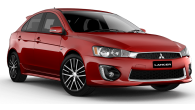





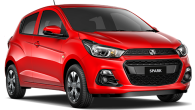
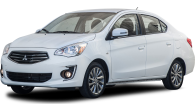






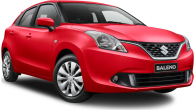








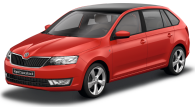
.jpg)
.jpg)



